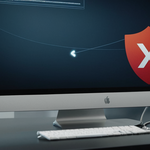
Malwarebytes has established itself as a prominent cybersecurity solution since its founding in 2004, earning recognition as the number one malware removal and protection software in 2025. However, the question of whether Malwarebytes is truly safe encompasses multiple dimensions that require thorough examination, including the legitimacy of the company itself, its effectiveness at detecting and removing threats, its impact on system performance, privacy considerations, and how it compares to competitors in the evolving threat landscape. Recent testing reveals that while Malwarebytes excels at malware identification and has received prestigious awards from PCMag and CNET in 2025, it presents a nuanced profile of strengths and limitations that users must understand before making security decisions. This comprehensive analysis explores the evidence surrounding Malwarebytes’ safety, trustworthiness, and practical utility for protecting personal devices and data.
Company Legitimacy and Founding History
Origins and Rapid Growth
Malwarebytes Inc. began as an informal endeavor in 2004 when Marcin Kleczynski, a Polish-American teenager working as a computer repair technician in Chicago, became frustrated with existing security solutions. After his mother’s computer became infected with malware that neither McAfee nor Symantec could remove, Kleczynski took matters into his own hands, learning how to remediate the infection through online forums and developing his own tools. This personal motivation led him to connect with Bruce Harrison, another forum regular, and together they created the inaugural version of Malwarebytes’ software. In 2006, Kleczynski developed RogueRemover, a utility specifically targeting “rogue” infections that scam users with fake antivirus software, which proved instrumental in developing the broader Malwarebytes Anti-Malware platform.
The company formally launched on January 21, 2008, while Kleczynski was simultaneously studying computer science at the University of Illinois. What makes this origin story particularly relevant to safety assessment is that the company emerged from genuine user need and community problem-solving rather than as a purely commercial venture designed to extract value from security-conscious consumers. By their first year of operation, Kleczynski and Harrison reportedly generated $600,000 in revenue, and Kleczynski achieved his first million in earnings while still a teenager. This rapid success reflected both the quality of their solution and genuine market demand for specialized anti-malware tools.
Organizational Evolution and Scale
The trajectory of Malwarebytes’ growth provides evidence of sustained legitimacy and institutional maturity. By 2014, the company had treated over 250 million computers worldwide and had grown to process substantial revenue volumes. In June 2015, Malwarebytes relocated its headquarters from San Jose to a new 52,000-square-foot office in Santa Clara, California, reflecting expansion from a startup operation to an established enterprise. Between 2015 and 2015 alone, the company reported revenue growth of 1653%, added 10 million users, and increased its user base from 25 to 35 million active users. This explosive growth trajectory demonstrates market confidence and sustained customer satisfaction necessary for such expansion.
In January 2016, the company raised $50 million in investment from Fidelity Management and Research Company, one of the world’s largest institutional investment firms. That same year, Malwarebytes announced over 75% growth in first-quarter sales compared to 2015, with billings exceeding $100 million and corporate subscription growth of 90%. These metrics reflect not just market interest but institutional confidence from sophisticated investors who conduct rigorous due diligence. By 2019, Malwarebytes had joined forces with NortonLifeLock, Kaspersky, and the Electronic Frontier Foundation to form the Coalition Against Stalkerware, demonstrating collaboration with legitimate security firms to combat emerging threats.
Today, Malwarebytes operates as a mature cybersecurity company headquartered in Santa Clara with over 800 employees globally and earns trust from businesses large and small, schools, hospitals, and government institutions. The company’s leadership includes experienced executives such as Tom Fox, who served as CFO of Angie’s List and held executive positions at NAVTEQ and Nokia, and Ameet Matharu, whose decade-plus experience scaling technology companies demonstrates professional governance. This institutional structure, investor backing, and executive composition indicate a legitimate, professionally managed organization rather than a questionable operation.
Safety and Legitimacy Verification
Official Distribution and Download Security
A critical component of assessing Malwarebytes’ safety is verifying that the software users download is genuinely produced by Malwarebytes and not compromised by malicious actors. The most reliable way to ensure safety is downloading exclusively from the official website, malwarebytes.com, which provides an unaltered, legitimate version free from tampering. This single source principle is essential because numerous counterfeit or compromised distribution points exist across the internet attempting to distribute modified versions of popular security software.
Security researchers and testing institutes have consistently verified that Malwarebytes software itself does not contain malware or pose security risks. If Malwarebytes’ own code contained harmful elements, other security vendors would immediately detect and flag it, and it would certainly face public exposure within the research and cybersecurity community. The absence of such warnings across reputable security organizations confirms the software’s safe code base. Users need not fear that installing Malwarebytes from the official source will introduce malware or compromise their system through the installation process itself.
Institutional Trust and Industry Recognition
Beyond self-assessment, multiple independent institutions have verified Malwarebytes as a safe and trustworthy security solution. In 2025, PCMag recognized Malwarebytes with awards for Best Antivirus Software, Best Malware Removal, and Best Protection Software after conducting rigorous evaluation processes including real-world hands-on testing, independent lab results, and decades of accumulated expertise. PCMag specifically noted that “Malwarebytes Premium proved highly effective in malware protection and defending against malicious and fraudulent web pages”. The organization praised its speed and effectiveness, stating that Malwarebytes Premium’s “speedy scan and excellent hands-on test results are a big draw”.
Simultaneously, CNET awarded Malwarebytes “Best Malware Removal Service 2025” after comprehensive testing of setup, features, look and feel, and performance. CNET highlighted top-tier malware removal, comprehensive Browser Guard web protection, and an easy-to-use customizable interface as standout features. Additionally, the AVLab Cybersecurity Foundation recognized Malwarebytes with a “Product of the Year 2025” certificate for achieving the highest quality of protection against internet threats in the Advanced In-The-Wild Malware Test. MRG Effitas testing from Q2 2024 showed Malwarebytes scored 100% in five categories, outperforming competition.
These institutional recognitions carry weight because reputable testing organizations and publications maintain their credibility through rigorous, objective evaluation. Publishing false or misleading endorsements would damage these publications’ reputations and reader trust far more than any financial incentive. The convergence of multiple independent recognitions provides substantial evidence of safety and efficacy.
Detection and Malware Remediation Capabilities
Specialized Anti-Malware Focus
Understanding Malwarebytes’ safety profile requires recognizing what it is designed to do and what it is not designed to do. Malwarebytes is not a traditional comprehensive antivirus program. Instead, it specializes as an anti-malware tool with a focused mission: identifying and eliminating threats such as spyware, ransomware, trojans, worms, adware, and other malicious code that may evade traditional antivirus solutions. This specialization distinguishes it from antivirus programs that aim for broader protection against various threat categories.
This distinction matters for safety assessment because Malwarebytes excels within its specialized domain but should not be expected to provide comprehensive antivirus protection. The company openly acknowledges this positioning and recommends pairing Malwarebytes with traditional antivirus software for comprehensive protection. This transparent positioning about capabilities and limitations actually enhances trustworthiness, as the company does not misrepresent its scope.
Free Version Capabilities
Malwarebytes offers a genuinely free version that provides meaningful malware detection and removal without hidden fees. The free version operates as an on-demand scanner that users manually initiate to detect and remove malware when infections occur. This makes it particularly valuable for post-infection cleanup and remediation when a system is already compromised. Users can scan and remove malware without any hidden fees or forced premium upgrades, representing a transparent business model.
However, the free version has important limitations. It only performs protection when users manually run scans; it does not provide proactive, real-time protection. This reactive approach means users must actively remember to scan their systems regularly and may experience gaps in protection if scans are not performed consistently. The free version also lacks features like ransomware defense and advanced heuristic detection. Understanding these limitations is crucial for safe use—users cannot rely solely on the free version for comprehensive ongoing protection.
Premium Version Real-Time Protection
Malwarebytes Premium offers real-time protection as a key differentiator from the free version. This premium tier provides continuous background scanning and threat prevention, actively monitoring the system for malicious activity rather than requiring manual initiation. Real-time protection includes ransomware defense, advanced heuristic detection, and proactive identification of emerging threats before they can compromise the system.
The real-time protection feature encompasses multiple security layers including web protection that blocks infected websites, malware and potentially unwanted programs (PUP) protection, ransomware protection, and exploit protection. Exploit protection represents an advanced security technique that defends against attacks targeting software vulnerabilities, preventing malicious code from exploiting security flaws in applications. This layered approach provides multiple detection methods to catch threats that might evade single-technique detection.
Zero-Day and Advanced Threat Detection
One of Malwarebytes’ distinctive capabilities lies in detecting zero-day threats—vulnerabilities exploited by attackers before software developers have patched them. Malwarebytes excels at identifying and neutralizing these advanced threats that exploit unknown vulnerabilities, particularly because it uses AI-powered machine learning detection that can identify threats based on behavioral patterns rather than known signatures alone. This capability is particularly relevant for users concerned about advanced persistent threats and sophisticated attackers.
The Malware.AI machine learning system employed by Malwarebytes compares its services to other antiviruses in real-time using a remediation map, helping identify and classify emerging threats. This AI-driven approach allows Malwarebytes to detect previously unknown malware variants through behavioral analysis rather than requiring updated signature databases for each new threat. In practice, this means Malwarebytes can protect against threats that traditional signature-based antivirus software might miss entirely.
Independent Testing Results and Performance Evaluation
AV-Test Institute Results
Independent testing laboratories provide objective assessment of antivirus and anti-malware software performance. The AV-TEST Institute, one of the premier international testing organizations, has evaluated Malwarebytes extensively. In recent October 2023 testing, Malwarebytes garnered 5.5 points in the protection and performance categories while achieving a maximum 6 points in usability. The latest version demonstrated 99.9% detection of widespread malware and 99.2% detection of zero-day threats. The scores indicate solid but not exceptional performance compared to leading competitors.
One notable finding from AV-Test is the distinction between identifying malware and finding malware. While Malwarebytes achieved a perfect 100% score at identifying recently discovered malware through its updated database, this differs significantly from actively detecting hidden or obfuscated threats. When Security.org tested Malwarebytes with five well-hidden, sneaky viruses, Malwarebytes found only one, highlighting the gap between identification and active discovery. This nuance is important for users to understand—the software can identify known malware patterns effectively but may struggle with sophisticated obfuscation or novel attack methods designed to evade signature-based detection.
Real-World Performance Testing
When security researchers conduct hands-on testing with 150 malicious files, Malwarebytes demonstrated varying results across different testing scenarios. In one prominent test, Malwarebytes caught 133 threats out of 150, scoring 88.6%, which outperformed respected competitors like Bitdefender (80.6% detection) and TotalAV (81.3% detection). The test was completed in approximately 6 minutes, making it notably faster than competitors. These results demonstrate strong detection performance under real-world conditions when tested by independent researchers.
However, other independent testing revealed more modest results. When Cybernews researchers planted 150 malware samples in the downloads folder and ran a full scan, Malwarebytes detected 97 samples in approximately 2 minutes and 20 seconds, scanning 192,056 files. Compared to other premium antiviruses, Malwarebytes detected fewer samples than competitors—even Windows Defender outperformed it by detecting 103 samples. This variation across tests suggests that detection rates may vary depending on malware types, obfuscation techniques, and testing methodology.
Browser Guard and Real-Time Protection Testing
Cybernews testing of the Browser Guard feature revealed mixed results. The Browser Guard successfully blocked all 10 out of 10 malicious URLs tested, demonstrating excellent web-based threat prevention. However, when testing malware downloads, the Browser Guard showed a 0% success rate, failing to block any of the 10 threats tested. The Premium version’s real-time protection tested on 150 new malware samples performed poorly initially, detecting 0 samples after 5 minutes and 35 seconds of scanning.
These mixed testing results suggest that while Malwarebytes offers strong URL-based web protection, its detection of actively downloaded malware through real-time protection requires improvement. Users should understand that Browser Guard excels at preventing access to malicious websites but may not reliably prevent malware downloads from compromised legitimate websites or sophisticated attack vectors. This limitation does not render Malwarebytes unsafe, but users should not assume it provides comprehensive protection against all malware delivery methods.

AV-Comparatives Assessment
Malwarebytes joined the AV-Comparatives testing in 2021, with the most recent July-October 2022 tests showing that Malwarebytes Premium successfully blocked 99.0% of threats in real-world protection tests. These real-world tests simulate typical user behavior, including web browsing and file interactions, providing practical assessment of protection effectiveness. However, in malware protection tests that execute malicious files on the system, Malwarebytes results were less impressive, with experts categorizing its security as merely “tested” due to many false positives generating alerts on legitimate files. This performance disparity highlights that Malwarebytes performs differently depending on threat vectors and detection methods.
Privacy and Data Protection Practices
Privacy Policy Transparency
Malwarebytes maintains a relatively transparent privacy policy compared to many technology companies. Notably, the company does not sell user data to third parties—a critical distinction in the data protection landscape. When users opt into data collection to help Malwarebytes improve its services, the company explicitly states what information is collected, including name, phone number, username, mailing address, machine identification, billing information, IP address, browser type, ISP, operating system, timestamps, and clickstreams.
Particularly noteworthy is that opting out of data collection is the default setting rather than something users must actively search for in fine print. This default-opt-out positioning demonstrates respect for user privacy and contrasts with many companies that use opt-in requirements hidden in complex settings. The company also takes the time to explain exactly what data they collect and what they do with it, representing transparency that earned recognition from security researchers.
Personal Data Remover Feature
Recognizing that personal information scattered across the internet poses significant privacy risks, Malwarebytes introduced the Personal Data Remover feature to help users reclaim their digital presence. This tool scans across 175+ data brokers’ databases to identify where personal information is publicly exposed, then facilitates removal through both automated and guided processes. The feature addresses a critical privacy concern as Malwarebytes research indicates that scammers and identity thieves often rely on publicly available data like names and contact details to target individuals.
Malwarebytes’ research reveals that 98% of people have exposed Personally Identifiable Information online, with the average person’s data appearing on 25 sites and reappearing on the same sites an average of 3 times annually. By offering Personal Data Remover, Malwarebytes extends safety beyond malware detection to encompass privacy protection. The subscription version provides continuous monitoring, progress reports, and confirmations of successful removals, saving users potentially hundreds of hours per year attempting manual removal.
Privacy Concerns and Institutional Response
Malwarebytes’ 2025 research highlights widespread concerns about personal data privacy. The research found that 89% of respondents worry about corporations using their data inappropriately, 72% fear government access without consent, and 89% express concern about AI tools using data without permission. These concerns reflect broader societal anxieties about data exploitation that go beyond malware concerns but directly impact overall security and safety perception.
In response to privacy legislation, Malwarebytes actively informs users about their rights through analysis of privacy bills. The company documented California’s 2025 privacy legislation, including AB 656 requiring social media companies to enable easy account deletion with automatic personal data removal, and SB 361 expanding data broker transparency obligations. By educating users about their legal rights and tools to exercise those rights, Malwarebytes demonstrates commitment to privacy protection beyond its own products.
Comprehensive Feature Analysis
Core Security Features
Malwarebytes Premium provides multiple security layers designed to address different threat vectors. Real-time protection runs continuously in the background, employing machine learning and behavioral detection to identify threats before they can compromise systems. Web protection blocks infected websites and prevents users from inadvertently visiting sites hosting malware distribution networks. Ransomware protection specifically targets the growing threat of ransomware attacks, which cost organizations and individuals billions annually.
Exploit protection, an advanced feature, shields vulnerable applications from attacks targeting software vulnerabilities and security flaws. Rather than simply detecting known exploits, this feature prevents exploitation of vulnerabilities in common applications that users rely on daily. Potentially unwanted programs (PUP) detection identifies software that may not be explicitly malicious but functions in unwanted ways, such as aggressive adware or browser hijackers.
Browser Guard and Web Protection
Browser Guard operates as a browser extension providing ad blocking, tracker blocking, and malicious website filtering. This protection layer prevents users from being redirected to malware-hosting sites and blocks advertisements that could serve as delivery vectors for malicious code. One of Malwarebytes’ 2025 improvements introduced Scam Guard, an AI-powered chat companion exclusively available in Malwarebytes Mobile Security. This feature allows users to upload suspicious texts, links, or screenshots for real-time analysis and advice on identifying scams.
However, the feature set should be understood in context of what Malwarebytes does not provide. The software lacks some features common in comprehensive antivirus packages, including firewall protection, parental controls, and password managers. Malwarebytes does not include built-in optimization tools or webcam protection that some competing solutions offer. Users seeking these additional features would need to obtain them separately or choose a more comprehensive security suite.
Mobile and Cross-Platform Availability
Malwarebytes extends protection across multiple device types and operating systems, recognizing that security threats manifest across the full spectrum of modern devices. The software is available for Windows, Mac, Android, iOS, and ChromeOS, allowing users to protect smartphones, tablets, laptops, and desktop computers with a unified approach. This multi-platform availability is particularly important given that mobile devices now represent primary attack targets for cybercriminals seeking to access personal and financial information.
System requirements remain reasonable, with Windows systems requiring at least 4GB of RAM (8GB preferred) and 1GB of free disk space for installation. macOS compatibility extends back through multiple recent versions including Sequoia, Sonoma, Ventura, Monterey, Big Sur, and earlier releases. Android support covers versions 9 through 14. These compatibility ranges indicate broad device support for most modern devices in use.
System Performance Impact
Resource Consumption During Scanning
One practical concern for users involves the system performance impact of running Malwarebytes scans and real-time protection. Research indicates that CPU usage during full scans fluctuates significantly, ranging from 28% to 100% depending on scan intensity and system activity. During real-time protection operation, CPU usage varies from 6% to 99%, providing more modest impact than during intensive scans. Overall, Malwarebytes shows moderate performance impact—more intensive than ESET or Avira but less demanding than TotalAV.
The scanner’s speed represents one of its strong points, capable of scanning hundreds of thousands of files in just over one minute during Quick Scan operations. Full scans may take longer but remain relatively rapid compared to competitors—approximately 2-6 minutes depending on system configuration and malware load. This speed advantage means users experience less disruption from security scanning and can more easily maintain regular scanning schedules.
Device Slowdown Considerations
For modern systems with adequate resources, Malwarebytes typically produces minimal noticeable performance impact during normal operation. However, older devices with limited RAM and processor power may experience perceivable slowdowns, particularly during real-time scanning or intensive threat detection operations. Users with aging hardware should test Malwarebytes before committing to a subscription, as the performance may become intrusive on systems that are already resource-constrained.
The free version, being lightweight and operating only during manually initiated scans rather than continuously, generally produces less performance impact than the premium version. This makes the free version more suitable for users concerned about performance degradation or those with older systems. For newer systems, the performance trade-off for premium protection is generally acceptable.
Comparative Competitive Analysis
Malwarebytes Versus Norton 360
Norton 360 represents a primary competitor offering more comprehensive antivirus protection than Malwarebytes’ specialized anti-malware focus. Norton’s machine learning engine combines with extensive malware database coverage to detect all known and emerging threats, achieving 100% detection rates in independent testing. Norton includes additional features absent from Malwarebytes, including firewall protection, password manager, parental controls, dark web monitoring, webcam protection, and cloud backup.
However, Norton’s broader feature set comes at higher entry-level pricing starting at $29.99 annually compared to Malwarebytes’ $44.99 annually for comparable coverage. Additionally, Norton provides unlimited VPN data compared to Malwarebytes’ limitations, and includes ID theft protection in certain regions. For users prioritizing comprehensive features over specialized malware remediation, Norton may offer better value. For users specifically seeking advanced anti-malware capabilities, Malwarebytes’ focused approach may be preferable.
Malwarebytes Versus Bitdefender
Bitdefender offers a feature-rich alternative with a cloud-based scanner that achieved 100% detection of malware samples in testing, compared to Malwarebytes’ 64.7% detection rate in some scenarios. Bitdefender’s cloud-based scanning minimizes local system performance impact, addressing the performance concerns some users experience with Malwarebytes. Bitdefender includes numerous features absent from Malwarebytes, including secure web browser (Safepay), system optimization tools, password manager, and secure web browser.
Bitdefender’s entry-level Antivirus Plus plan starts at $34.99 annually, positioning it as more affordable than Malwarebytes while offering superior detection rates and additional features. The Total Security plan at $54.99 annually provides even more comprehensive protection at lower cost than Malwarebytes Premium. For users seeking maximum malware detection combined with additional features, Bitdefender represents a stronger competitive offering.

Malwarebytes Versus TotalAV
TotalAV represents the most affordable option among leading antivirus providers, starting at just $19.00 annually according to comparative analysis. Despite lower pricing, TotalAV delivers robust security against viruses, powerful real-time protection, and versatile scanning options. TotalAV detected malware more effectively than Malwarebytes in several independent tests, demonstrating that cost does not necessarily reflect protection quality.
TotalAV’s bundle approach combining antivirus, VPN, password manager, and other tools provides exceptional value, though it may offer fewer specialized anti-malware capabilities than Malwarebytes’ focused approach. For budget-conscious users, TotalAV offers superior value and performance. For users specifically prioritizing advanced malware detection and remediation, Malwarebytes’ specialization may justify higher costs.
Known Security Incidents and Transparency
2020-2021 SolarWinds Attack Exposure
Assessing Malwarebytes’ safety requires acknowledging a significant security incident that affected the company. In December 2020, Malwarebytes was targeted by the same nation-state threat actor responsible for the SolarWinds supply-chain attack that compromised numerous organizations worldwide. However, Malwarebytes did not use SolarWinds software, so the attack employed a different vector—it exploited a dormant email protection product within the company’s Microsoft Office 365 tenant.
The attackers leveraged a self-signed certificate with credentials to gain access to a limited subset of Malwarebytes’ internal company emails. Critically, the investigation found no evidence of unauthorized access to Malwarebytes’ internal on-premises or production environments. Malwarebytes source code, build processes, and software delivery remained secure and uncompromised. The company’s software itself remained safe to use; only internal business communications were exposed.
Response and Transparency
Malwarebytes’ response to this incident demonstrates commitment to transparency and security responsibility. The company immediately activated its incident response team and engaged Microsoft’s Detection and Response Team to conduct thorough investigation. The company transparently communicated the incident to business customers using SolarWinds, explicitly notifying them and recommending precautionary measures. Rather than downplaying the incident, Malwarebytes provided detailed technical explanation of how the attack occurred and what was and was not compromised.
This transparency contrasts with companies that minimize or obscure security incidents. Malwarebytes’ detailed public disclosure of the SolarWinds-related attack, along with clear explanation that their software remained uncompromised, actually enhances confidence in their security practices. The company demonstrated that even sophisticated nation-state actors attempting to exploit privileged access to Microsoft 365 could not compromise Malwarebytes’ actual software or core production systems. This incident, handled transparently, provides evidence that Malwarebytes maintains security practices robust enough to withstand advanced persistent threats.
Pricing and Value Proposition
Free Version Pricing and Value
Malwarebytes’ free version truly costs nothing, representing legitimate free software without hidden fees or forced premium upgrades. This free tier provides meaningful value through malware scanning and removal capabilities suitable for post-infection cleanup. The genuine free option removes barrier to entry and allows users to evaluate Malwarebytes before committing to paid subscription.
Premium Subscription Costs
Premium protection starts at approximately $44.99 annually for single-device protection, offering real-time security, ransomware defense, web protection, and Browser Guard. Family plans protecting multiple devices begin around the same annual cost for 3-device protection, scaling to 10-device family protection at higher price points. These prices position Malwarebytes competitively with other specialized anti-malware solutions while remaining more affordable than some comprehensive antivirus suites.
All Malwarebytes plans include free customer support and a 60-day money-back guarantee, allowing users to trial the service risk-free. This guarantee demonstrates confidence in product quality and reduces purchase risk for uncertain users. Premium users also receive 24/7 human support and tailored security assessments beyond standard protection features.
Bundled Services and Extended Protection
Malwarebytes offers bundled packages combining Premium Security with Privacy VPN and Identity Theft Protection for comprehensive digital safety. The Personal Data Remover service at $99.99 annually provides continuous monitoring and removal of personally identifiable information from data brokers’ databases. The Ultimate plan at $119.99 annually (reduced from $239.99) combines all services—device security, VPN, identity theft protection with up to $2 million insurance coverage, and personal data removal.
These bundled offerings provide users the opportunity to consolidate security spending with a single provider rather than maintaining separate subscriptions for antivirus, VPN, identity theft monitoring, and data removal services. The pricing reflects reasonable value for comprehensive digital protection across multiple threat vectors.
Best Practices for Optimal Safe Use
Pairing with Traditional Antivirus
Industry experts and Malwarebytes itself consistently recommend pairing Malwarebytes with traditional antivirus software for comprehensive protection. This layered approach leverages Malwarebytes’ specialized anti-malware capabilities alongside a comprehensive antivirus solution, creating defense-in-depth that addresses multiple threat categories. The combination ensures broader coverage than either solution provides independently while maintaining manageable system resource requirements through careful configuration.
Regular Scanning and Maintenance
Users should establish consistent scanning schedules with Malwarebytes, particularly with the free version that requires manual initiation. At minimum, weekly full scans provide reasonable threat detection frequency. Users concerned about advanced threats may prefer more frequent scanning or enabling real-time protection through premium subscription. Regular scanning ensures that threats are identified and removed before they can compromise sensitive data or system functionality.
Official Download Verification
Users must ensure they download Malwarebytes exclusively from the official website, malwarebytes.com, to guarantee they receive uncompromised software. Numerous counterfeit distribution sites exist attempting to distribute modified versions or malware disguised as Malwarebytes. The official website is the only reliable source for legitimate software.
Password Changes After Infection
Following any malware infection, even after Malwarebytes removes the threat, users should immediately change all passwords for email accounts, financial services, social media, and other sensitive platforms. This precaution prevents attackers from using credentials captured by malware before removal. Users should employ multi-factor authentication whenever available to strengthen account security against credential-based attacks.
Addressing Performance and Usability Concerns
Managing CPU Usage and Slowdowns
Users experiencing performance issues with Malwarebytes can take several optimization steps. Excluding trusted applications and locations from scanning reduces unnecessary monitoring of known-safe software, reducing system load. Scheduling scans during periods of low user activity, such as nighttime hours, minimizes disruption to active work. Disabling rootkit scanning, which is computationally intensive and not necessary for most user environments, can reduce scan duration and resource consumption.
For systems with limited resources, users might consider using the free version’s on-demand scanning rather than premium real-time protection, accepting reduced continuous protection in exchange for minimal performance impact. Alternatively, users with older systems should evaluate whether performance degradation is acceptable before committing to premium subscription.

Interface and Feature Navigation
Malwarebytes presents a minimalistic, clean interface designed for user-friendliness and intuitive navigation. The dashboard clearly displays malware detection history, scanner options, and real-time protection status. For most users, the interface is straightforward and requires minimal learning. However, advanced customization options may appear overwhelming to users seeking a simpler, more guided security experience.
The Malware Bytes Safety Verdict
After comprehensive analysis of evidence regarding Malwarebytes’ safety, several conclusions emerge with clarity. Malwarebytes is demonstrably safe to download and use when obtained from the official website. The company is a legitimate, professionally managed organization with over twenty years of history, substantial investor backing, experienced executive leadership, and institutional recognition from reputable security organizations. The software does not contain malware or pose inherent risks to system security.
However, safety encompasses more than absence of malware in the software itself. Users must understand that Malwarebytes represents a specialized anti-malware solution rather than comprehensive antivirus protection. While the software excels at identifying known malware signatures and employing behavioral detection for unknown threats, independent testing reveals that detection rates vary across different malware types and delivery vectors. Users should not expect Malwarebytes to protect against every possible threat vector, particularly sophisticated exploits or novel attack methods.
The recent awards from PCMag, CNET, and AVLab in 2025 provide credible third-party validation that Malwarebytes offers effective malware protection meeting professional standards. The company’s transparent privacy policy, willingness to acknowledge and honestly disclose security incidents, and innovation in features like Personal Data Remover and Scam Guard demonstrate commitment to user safety beyond simple malware detection.
For users concerned with comprehensive security, Malwarebytes works best as a complementary tool alongside traditional antivirus software rather than as a standalone solution. Users prioritizing specialized anti-malware remediation capabilities, particularly for post-infection cleanup, will find Malwarebytes highly effective. Users seeking comprehensive antivirus features like firewall protection, parental controls, and password management might find competitors like Bitdefender or Norton offering more complete solutions, though at potentially higher cost.
The 60-day money-back guarantee provides risk-free evaluation opportunity allowing users to assess whether Malwarebytes meets their specific security needs before financial commitment. The genuinely free version enables users to experience core functionality without any cost. For users willing to understand its specialized capabilities and limitations, Malwarebytes represents a safe, effective, and trustworthy addition to any cybersecurity strategy, particularly when implemented as part of comprehensive, layered defense-in-depth approach to digital protection.
Protect Your Digital Life with Activate Security
Get 14 powerful security tools in one comprehensive suite. VPN, antivirus, password manager, dark web monitoring, and more.
Get Protected Now





